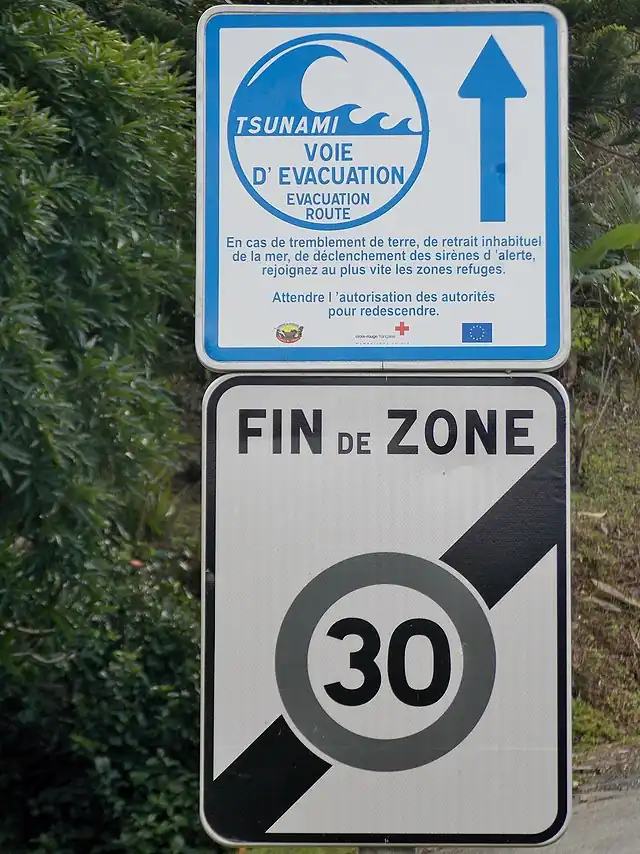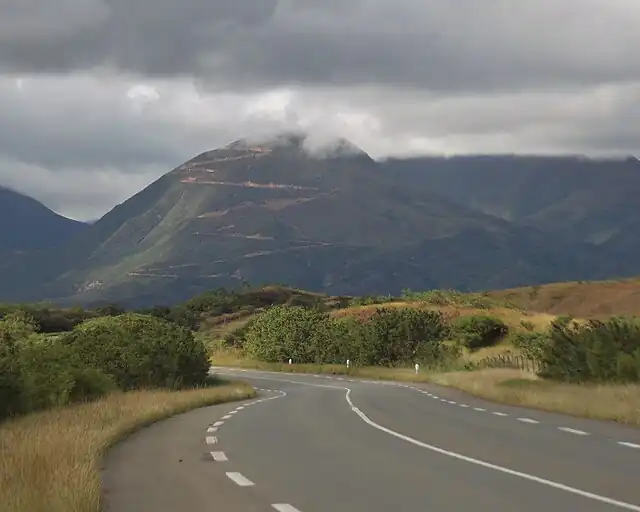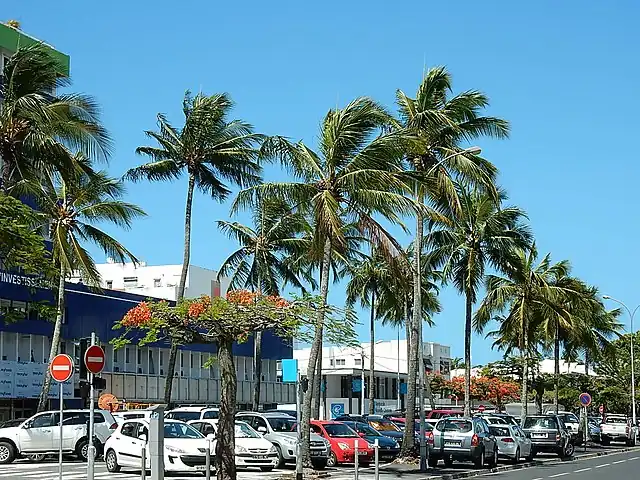Driving in New Caledonia
Driving is often the best way to get around New Caledonia, especially where buses don't operate.
Understand
Similar to the neighbouring countries of Australia, New Zealand, Japan and Fiji, car ownership is very high, due to the very low population density of the nation. While public transportation is possible in Nouméa, once you get out of the city, your options are limited to tour buses and private car, and if you wish to visit places away from major tourist centres near Nouméa, the only option left is car. 90% of the population also lives in the Grande Terre, so that's where the best infrastructure is.
Because it is still a French territory, most of the road rules that apply in France also apply in New Caledonia as well. This also means that New Caledonians drive on the right side of the road, and drive left handed cars, unlike neighbouring Australia, New Zealand, Japan or Fiji.
Travel times
Travel times from the following places from Nouméa are below.
| Approx. time taken from Nouméa | Distance from Nouméa | |
|---|---|---|
| Tontouta | 45 min | 46 km |
| Poum | 5 hr | 423 km |
| Bourail | 2 hr | 162 km |
| Hienghène | 5 hr 15 min | 381 km |
| Le Mont-Dore | 15-30 min | 10-25 km |
Road types
The types of road range from small, narrow roads through the mountains to wider highways with 50-km/h limits, and 4-lane expressways with 110-km/h limits.
Roads are classified by the following, where # stands for a route number:
- RT# = Territorial highway (French: route territoriale).
- RP# = Provincial routes (route provinciale).
- RM# = Municipal route (route municipale)
- RPN# = Provincial routes in the north (route provinciale du Nord)
- CR# = rural road, usually a dirt track (chemin rural)
Renting
Age limits
To rent in New Caledonia, you must be of at least 18 years, but some car companies only allow if you're over 21.
Car rentals
There are some well known international car companies in New Caledonia like Europcar, Hertz and Avis at La Tontouta airport, with some of them operating 24/7.
Road rules and safety
Speed limits

The urban default is 30 km/h, the rural limit is 50 km/h and 110 km/h on expressways. This may come as a surprise to those used to driving in Australia or metropolitan France, where the limits are higher. The limit may vary in some areas, so stick to what's signposted. Because speeding is very common in New Caledonia, mobile speed cameras are in use. As the name implies, these can be used anywhere, and the penalties are harsh.
Driving licence
To drive as a foreigner, you will need the following: driving licence (translated to French), passport, registration, and insurance. If you hold an EU driving licence, you won't need a French translation or your passport. An IDP is only needed if you are staying over six months.
Mobile phones
Similar to Australia, New Caledonia has a strict policy against driving while using your mobile phone, and only hands free is permitted. There are harsh penalties for illegally using a non-hands free phone while driving.
Stick to the right
%252C_New_Caledonia.jpg.webp)
New Caledonia, like the rest of France, drives on the right side of the road, which means driving a left-hand vehicle. If you are used to driving on the left, you must concentrate at all times. Take particular care when pulling out from lay-bys and driveways or when you are tired. It is very easy to have a lapse of concentration and to revert to habit, especially on open mountainous roads. Most roads don't have a median barrier, so it's quite easy to go your own way and forget. You may overtake on the left, where conditions permit. By default, you are required to give way to traffic approaching your right (priorité à droite), unless traffic on the incoming road is controlled by a stop or yield sign.
Seatbelts
Seatbelts are mandatory, no matter where you are in the car, while children seven and under must be restrained in an approved child safety seat. There are hefty fines for not adhering to these rules; the only exceptions are for the very small minority, who must carry their medical certificate to prove why.
Overtaking
Overtaking rules are very similar to those of France and Australia. On expressways, keep right, and overtake on the left lane and on rural highways, such as RT1 or RP5, keep right, but use the opposite incoming lane to overtake. However, it's not advisable to overtake on roads on the mountains due to the fact that most of it is just one lane, and that similar to Australia's rural roads. Unlike that though, since this is a mountain range, even veering off to the side is not possible.
Drink driving
The blood alcohol limit is 50 mg/0.05%, but it's not a good idea to drink at all if you're used to driving on the other side of the road. People have been caught drunk driving a lot in New Caledonia, and while it's not that all uncommon for residents and locals, police may sometimes do random breath tests along the road.
Urban and rural driving


Driving through the Central Grande Terre mountain range
While most think of the Pacific islands as low lying and flat, New Caledonia has a mountain range of its own. The roads here are fairly decent, if slightly narrow by most international standards, and with a low speed limit of just 50 km/h.
Rural expressways
There is only one rural expressway in New Caledonia, and this shouldn't be too much of a surprise given that the whole country only has two expressways. The E1 (part of RT1) is mainly just a connector from Nouméa to La Tontouta Airport. This is also the only time where you could go 110 km/h in New Cal.
Apart from this expressway, all other rural roads are undivided highways.
City parking
Parking in the city shouldn't be a problem as there's about 7000 spaces in Nouméa, with only about half of them being paid carparks. The risk of your car getting vandalised is extremely low, and unlike big urban cities, Nouméa doesn't have that problem. Parking your car on the street is also quite easy, and finding a slot is never too hard, but the hills may prove a challenge for some.